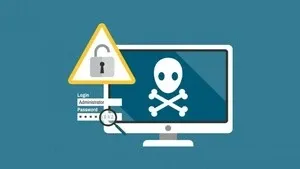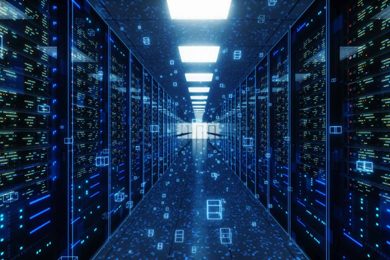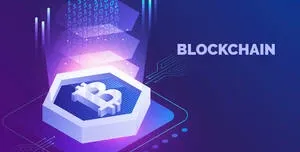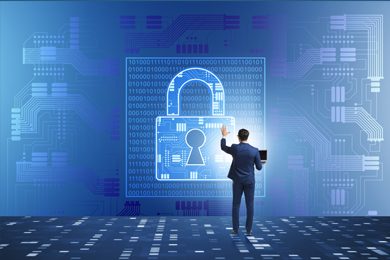This plan includes
- Limited free courses access
- Play & Pause Course Videos
- Video Recorded Lectures
- Learn on Mobile/PC/Tablet
- Quizzes and Real Projects
- Lifetime Course Certificate
- Email & Chat Support
What you'll learn?
- Deep understanding of Linux system administration, including managing users, permissions, file systems, and processes.
- Configuring network interfaces, setting up network services, and troubleshooting network connectivity issues
- Essential security practices, such as configuring firewalls, implementing access controls, and securing network services to protect systems from cyber threats.
- troubleshooting skills to diagnose and resolve common system issues, perform system updates, manage system resources, and implement backup and recovery.
Course Overview
Pre-requisites
- Basic Computer Skills: Students should have a good understanding of fundamental computer operations, including using a keyboard and mouse, navigating the file system, and working with basic software applications.
Target Audience
- Aspiring System Administrators
- IT Professionals seeking Linux skills
- Students and Graduates in IT fields
- Career Changers into Linux admin roles
- Linux Enthusiasts wanting formal certification
Curriculum 82 Lectures 13:19:40
Section 1 : Introduction
- Lecture 2 :
- Install RHEL 9 on VirtualBox
- Lecture 3 :
- Install Kali Linux on VirtualBox
Section 2 : Lesson 1 Understand and use essential tools
- Lecture 1 :
- Access a shell prompt and issue commands with correct syntax
- Lecture 2 :
- Relative path and absolute path.mp4
- Lecture 3 :
- cd Is and cat command
- Lecture 4 :
- Use input-output redirections
- Lecture 5 :
- Use input-output redirections
- Lecture 6 :
- Access remote systems using SSH
- Lecture 7 :
- Log in and switch users in multiuser targets
- Lecture 8 :
- Create and edit text files and Directory
- Lecture 9 :
- Create, delete, copy, and move files and directories
- Lecture 10 :
- List, set, and change standard ugo_rwx permissions
- Lecture 11 :
- Locate, read, and use system documentation including man, info, and files.
Section 3 : Lesson 2 Create simple shell scripts
- Lecture 1 :
- basics of scripting
- Lecture 2 :
- Conditionally execute code use of
- Lecture 3 :
- Use Looping constructs - While Loop
- Lecture 4 :
- Use Looping constructs - For loop
Section 4 : Lesson 3 Operate running systems
- Lecture 1 :
- Boot, reboot, and shut down a system normally
- Lecture 2 :
- Boot systems into different targets manually
- Lecture 3 :
- Interrupt the boot process in order to gain access to a system
- Lecture 4 :
- Identify CPU or memory intensive processes and kill processes
- Lecture 5 :
- Manage tuning profiles
- Lecture 6 :
- Locate and interpret system log files and journals
- Lecture 7 :
- Preserve system journals
- Lecture 8 :
- Securely transfer files between systems
Section 5 : Lesson 4 Configure local storage
- Lecture 1 :
- Features of partition on MBR and GPT Disks
- Lecture 2 :
- Create partition in Linux using fdisk utility
- Lecture 3 :
- Create partitions on MBR disks
- Lecture 4 :
- Make filesystem, mount and unmount partition to store data
- Lecture 5 :
- unmount and delete the partition
- Lecture 6 :
- Create, Extend Logial Volume Part1
- Lecture 7 :
- Create, Extend Logial Volume Part2
- Lecture 8 :
- Delete Logical Volume, Volume Group and Physical Volumes
- Lecture 9 :
- Mount temporary using UIID
- Lecture 10 :
- Configure systems to mount file systems at boot by universally unique ID
- Lecture 11 :
- unmount partition
- Lecture 12 :
- Add new partitions and logical volumes, and swap to a system non-destructive
- Lecture 13 :
- Understanding Partitions in Linux
Section 6 : Lesson 5 Create and configure file systems
- Lecture 1 :
- Create, mount, unmount, and use vfat, ext4, and xfs file systems
- Lecture 2 :
- Mount and unmount network file systems using NFS
- Lecture 3 :
- Configure autofs
Section 7 : Lesson 6 Deploy, configure, and maintain systems
- Lecture 1 :
- Schedule tasks using at and cron
- Lecture 2 :
- Start and stop services and configure services to start automatically at boo
- Lecture 3 :
- Configure systems to boot into a specific target automatically
- Lecture 4 :
- Introduction of Clocks and NTP
- Lecture 5 :
- Configure time service clients
- Lecture 6 :
- Install package using dpkg and configure repository in Debian based OS
- Lecture 7 :
- Package in its dependancy in Linux
- Lecture 8 :
- Install package on Linux using rpm
- Lecture 9 :
- Install package using apt command in Ubuntu
- Lecture 10 :
- Install the package using rpm command
Section 8 : Lesson 7 Manage basic networking
- Lecture 1 :
- Basics of Networking and IP address
- Lecture 2 :
- Configure IPv4 addresses
- Lecture 3 :
- Configure hostname resolution
- Lecture 4 :
- Configure network services to start automatically at boot
Section 9 : Lesson 8 Manage users and groups
- Lecture 1 :
- Introduction about users in Linux
- Lecture 2 :
- Create a local User on Linux
- Lecture 3 :
- Modify the local user accounts
- Lecture 4 :
- Adjust password aging for local user accounts
- Lecture 5 :
- Create and modify local groups in Linux
- Lecture 6 :
- Delete groups and users
- Lecture 7 :
- Configure superuser access on RHEL 9
- Lecture 8 :
- Configure superuser access in Kali Linux
Section 10 : Lesson 9 Manage security
- Lecture 1 :
- Configure firewall settings using firewall-cmd or firewalld
- Lecture 2 :
- Configure key-based authentication for SSH
- Lecture 3 :
- Allow specific user to loging using ssh
- Lecture 4 :
- Set enforcing and permissive modes for SELinux
- Lecture 5 :
- List and identify SELinux file and process context
- Lecture 6 :
- Restore default file contexts
- Lecture 7 :
- Manage SELinux port labels
- Lecture 8 :
- Use Boolean settings to modify system SELinux settings
- Lecture 9 :
- Diagnose and address routine SELinux policy violations
Section 11 : Lesson 10 Manage containers
- Lecture 1 :
- Introduction of Containers
- Lecture 2 :
- Host requirement for running container tools
- Lecture 3 :
- Find and retrieve container images from a remote registry
- Lecture 4 :
- Find and retrieve container images from a remote registry
- Lecture 5 :
- Inspect container images
- Lecture 6 :
- Build a container from a Containerfile
- Lecture 7 :
- Perform basic container management such as running, starting, stopping, an
- Lecture 8 :
- Managing containers ports
- Lecture 9 :
- Attach persistent storage to a container
Our learners work at
Frequently Asked Questions
How do i access the course after purchase?
It's simple. When you sign up, you'll immediately have unlimited viewing of thousands of expert courses, paths to guide your learning, tools to measure your skills and hands-on resources like exercise files. There’s no limit on what you can learn and you can cancel at any time.Are these video based online self-learning courses?
Yes. All of the courses comes with online video based lectures created by certified instructors. Instructors have crafted these courses with a blend of high quality interactive videos, lectures, quizzes & real world projects to give you an indepth knowledge about the topic.Can i play & pause the course as per my convenience?
Yes absolutely & thats one of the advantage of self-paced courses. You can anytime pause or resume the course & come back & forth from one lecture to another lecture, play the videos mulitple times & so on.How do i contact the instructor for any doubts or questions?
Most of these courses have general questions & answers already covered within the course lectures. However, if you need any further help from the instructor, you can use the inbuilt Chat with Instructor option to send a message to an instructor & they will reply you within 24 hours. You can ask as many questions as you want.Do i need a pc to access the course or can i do it on mobile & tablet as well?
Brilliant question? Isn't it? You can access the courses on any device like PC, Mobile, Tablet & even on a smart tv. For mobile & a tablet you can download the Learnfly android or an iOS app. If mobile app is not available in your country, you can access the course directly by visting our website, its fully mobile friendly.Do i get any certificate for the courses?
Yes. Once you complete any course on our platform along with provided assessments by the instructor, you will be eligble to get certificate of course completion.
For how long can i access my course on the platform?
You require an active subscription to access courses on our platform. If your subscription is active, you can access any course on our platform with no restrictions.Is there any free trial?
Currently, we do not offer any free trial.Can i cancel anytime?
Yes, you can cancel your subscription at any time. Your subscription will auto-renew until you cancel, but why would you want to?
Instructor

9405 Course Views
8 Courses



 Tech & IT
Tech & IT
 Business
Business
 Coding & Developer
Coding & Developer
 Finance & Accounting
Finance & Accounting
 Academics
Academics
 Office Applications
Office Applications
 Art & Design
Art & Design
 Marketing
Marketing
 Health & Wellness
Health & Wellness
 Sounds & Music
Sounds & Music
 Lifestyle
Lifestyle
 Photography
Photography
























